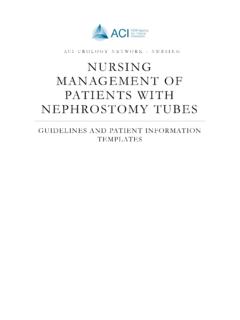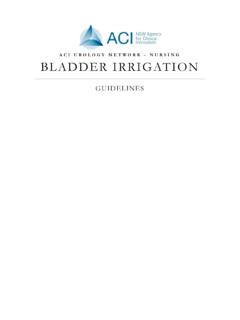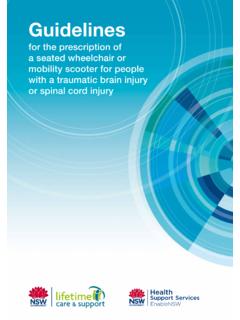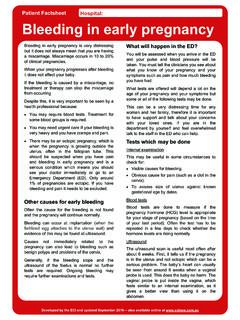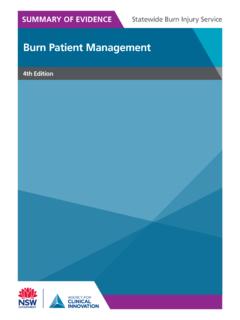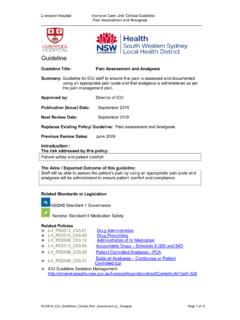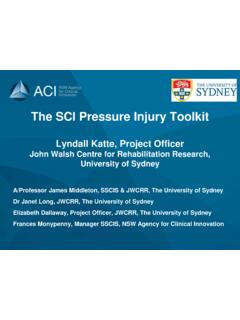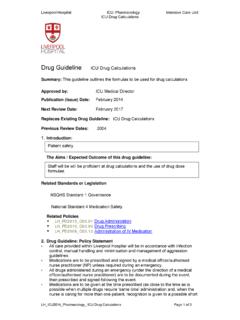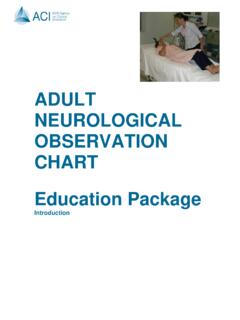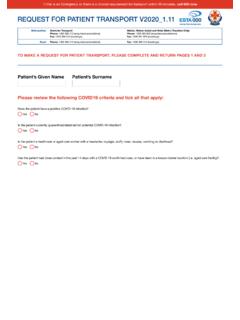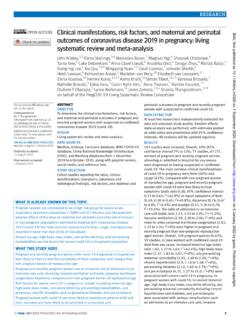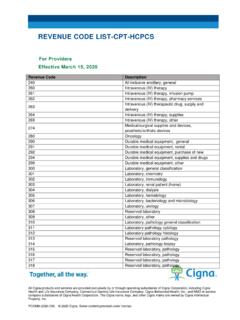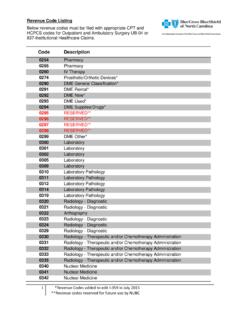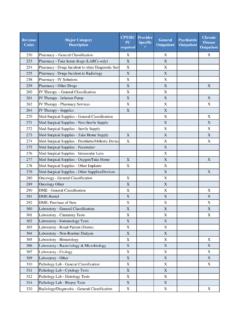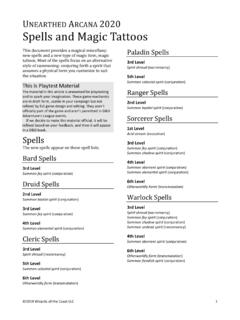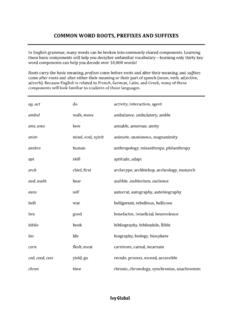Transcription of EXTRA CORPOREAL OXYGENATION (ECMO) LEARNING …
1 2016 Paula Nekic, CNE Liverpool ICU SWSLHD SSWAHS February 2016 EXTRA CORPOREAL OXYGENATION (ECMO) LEARNING PACKAGE Liverpool Hospital Intensive Care: LEARNING Packages Intensive Care Unit ECMO LEARNING Package LH_ICU2016_Learning_Package_ECMO_Learnin g_Package 2 | P a g e CONTENTS Anatomy 3 ECMO Definition 5 Indications / Contraindications 6 ECMO Equipment 7 Cannulation 12 Types of ECMO 14 CVVHDF with ECMO 18 Management 19 Nursing management 22 Complications / Troubleshooting 26 Weaning from ECMO 33 LEARNING Activities 34 Reference List 35 Liverpool Hospital Intensive Care.
2 LEARNING Packages Intensive Care Unit ECMO LEARNING Package LH_ICU2016_Learning_Package_ECMO_Learnin g_Package 3 | P a g e ANATOMY5,8 Superior vena cava Carries deoxygenated blood from the veins from the upper body then into right atrium Inferior vena cava Carries deoxygenated blood from the lower body to right atrium Aorta Carries oxygenated blood from the Left ventricle to the organs Pulmonary artery Carries deoxygenated blood from the Right ventricle to the lungs Liverpool Hospital Intensive Care: LEARNING Packages Intensive Care Unit ECMO LEARNING Package LH_ICU2016_Learning_Package_ECMO_Learnin g_Package 4 | P a g e Principle veins and arteries Veins carry blood to heart Arteries carry blood away from heart to lungs to be oxygenated Liverpool Hospital Intensive Care: LEARNING Packages Intensive Care Unit ECMO LEARNING Package LH_ICU2016_Learning_Package_ECMO_Learnin g_Package 5 | P a g e EXTRA CORPOREAL MEMBRANE OXYGENATION (ECMO) Definition.
3 1,7 ECMO is a form of extracorpeal life support where an external artificial circulator carries venous blood from the patient to a gas exchange device (oxygenator) where blood becomes enriched with oxygen and has carbon dioxide removed. This blood then re-enters the patient s circulation. Circuit flow is achieved using a pump either centrifugal or a roller pump. ECMO evolved from cardiopulmonary by-pass. Patients who are hypoxaemic despite maximal conventional ventilatory support, who have significant ventilator-induced lung injury or who are in cardiogenic shock may be considered for ECMO support.
4 For respiratory failure, the basic premise is that ECMO will allow the level of ventilatory support to be reduced, which may allow time for recovery from the underlying pathology and recovery from ventilator-induced lung injury to occur. There are two types of ECMO, veno-venous and veno- arterial. Figure 1: ECMO Circuit Liverpool Hospital Intensive Care: LEARNING Packages Intensive Care Unit ECMO LEARNING Package LH_ICU2016_Learning_Package_ECMO_Learnin g_Package 6 | P a g e INDICATIONS1,2,7 ECMO is indicated for potentially reversible, life-threatening forms of respiratory and / or cardiac failure, which are unresponsive to conventional therapy and it, is always applied at the discretion of the managing intensivist or cardiac surgeon.
5 Respiratory failure ALI/ARDS Aspiration Pneumonia Asthma Post lung transplant Lung contusion Cardiac Failure Post cardiac arrest Pulmonary embolus Drug overdose Post cardiac surgery Bridge to transplant Post heart transplant Cardiogenic shock CONTRAINDICATIONS Absolute Contraindications1,2,7 Severe irreversible neurological condition Encephalopathy Cirrhosis with ascites History of variceal bleeding Moderate-severe chronic lung disease Terminal malignancy HIV Absolute Contraindications to Veno-Venous ECMO Severe left ventricular failure EF <25% Cardiac arrest Absolute Contraindications to Veno-Arterial ECMO Aortic dissection Severe aortic regurgitation Relative Contraindications1,2.
6 7 Age >65 Multiple trauma with uncontrolled haemorrhage Multi-organ failure Relative Contraindication to Veno-Venous ECMO High pressure / high FiO2 IPPV for >1 week Relative Contraindication to Veno-Arterial ECMO Severe peripheral vascular disease Liverpool Hospital Intensive Care: LEARNING Packages Intensive Care Unit ECMO LEARNING Package LH_ICU2016_Learning_Package_ECMO_Learnin g_Package 7 | P a g e ECMO EQUIPMENT1,2 Perfusion Services are responsible for providing an ECMO pump and a primed circuit when ECMO is initiated in the ICU. They should be contacted as early as possible after the decision to commence ECMO is made.
7 In and out of hours, the cardiothoracic team on call is brought in to establish ECMO (including the medical perfusionist), details of the on-call staff are kept in ICU, and with the hospital switchboard. A spare ECMO circuit for exchange in the event of pump failure is available in the theatre pump room. Circuit priming and preparation are performed exclusively by Perfusion Services and equipment for this function is stored in Theatre. Perfusion staff provides 24 hours emergency cover for this role. ECMO Cannulae (stored in Theatre) Arterial Kits 50cm Medtronic Biomedicus cannulae: sizes: 19 and 21F Venous Kits 150 cm Medtronic Biomedicus cannulae: sizes: 19, 23 and 27 ECMO: initial set-up items: Centrifugal pump module Hand crank Brackets for Rotaflow oxygenator / pump ECMO pack 1x 1L crystalloid 2x tubing clamps Further items that should remain with the patient.
8 Spare ECMO circuit 2x single transducer kits (Rotaflow) ECMO operating notes, trouble-shooting guide and observation chart Rota-flow / Cardiohelp manual 4 sterile tubing clamps Sterile heavy scissors Heparin-bonded 3/8 3/8 connectors Silicon paste (for Rotaflow flow probe) ACT machine and tubes Heater-cooler Cable ties and gun 30cm monitoring extension lines for use with CVVHD Liverpool Hospital Intensive Care: LEARNING Packages Intensive Care Unit ECMO LEARNING Package LH_ICU2016_Learning_Package_ECMO_Learnin g_Package 8 | P a g e Figure 2: ECMO Equipment Oxygenator The oxygenator has a semi permeable membrane Blood flows across one side while a sweep gas 100% O2 moves in opposite direction The higher the gas flow rate the more CO2 is removed Sensor Measures the flow Needs cream applied to function.
9 Wrap in cling wrapSWEEP GAS & OXYGENATOR OXYGENATOR & CENTIFUGAL PUMP & SENSOR HEATER / COOLER HAND CRANK Liverpool Hospital Intensive Care: LEARNING Packages Intensive Care Unit ECMO LEARNING Package LH_ICU2016_Learning_Package_ECMO_Learnin g_Package 9 | P a g e Centrifugal Pump The circuit flow is achieved using a pump: either centrifugal or a roller Centrifugal is used for ECMO at Liverpool The centrifugal pump has a priming volume of 32mls which reduces haemodilution Figure 3: Centrifugal pump Rotaflow drive The drive is what the pump sits in and the blood flow is measured in the pump outlet by ultrasonic sensor The sensor requires regular placement of cream to maintain function Figure 4: Rotaflow drive Rotaflow emergency hand crank Rotaflow emergency hand crank This is utilised when there is a pump failure There is an LED display of the pump speed on the side of the drive Cream applied here Liverpool Hospital Intensive Care.
10 LEARNING Packages Intensive Care Unit ECMO LEARNING Package LH_ICU2016_Learning_Package_ECMO_Learnin g_Package 10 | P a g e Pump Console Provides the controls for pump blood flow rate and speed Battery backup of 90 minutes It can be incorporated into the bypass machine or stand alone mode Figure 5: Pump console Heater / Cooler Machine A heater cooler machine is attached to oxygenator to regulate patient temperature Aim to maintain normothermia Figure 6: Heater/cooler Blood flow rate: LPM Power Pump speed: RPM Modes Alarm Silence Dial for controlling pump speed Liverpool Hospital Intensive Care.
